Chesterfield Grammar School
In this exhibition we focus on the history of the grammar school in Chesterfield.
The free grammar school
The grammar school was one of the earliest schools in Chesterfield. The idea of a school originated from Sir Godfrey Foljambe. His will in 1594 provided a sum of money to pay for a schoolmaster for the ‘teaching and instruction of children’ within the town. Its foundation was confirmed in 1598 through Chesterfield’s Corporation Charter allowing the town ‘to build, found and erect one Grammar School…’
The Elizabethan charter of 1598 established a council for the borough. It also gave the responsibility of providing and administering a grammar school with its charitable bequests to the council.
Over the next century, the school, located on Sheffield Road, attracted further benefactors including James Lingard, Cornelius Clarke, Thomas Large and the Heathcote family.
By 1710 the Grammar School building was dilapidated and so was rebuilt using voluntary contributions. The medieval structure was replaced with a two storey brick building.
During the 17th and 18th centuries the school became one of the leading schools in the North of England. However by 1800 the school was in decline with very few pupils. The Corporation had also been found guilty of misusing funds and had to repay these to the school with interest. As a result the school was closed in 1832.
It is thought that the original school building on Sheffield Road was the medieval chapel of St Helen. Although the official name was the Free Grammar School, it was often referred to as ‘St. Helen’s School’ or ‘Chapel School’.
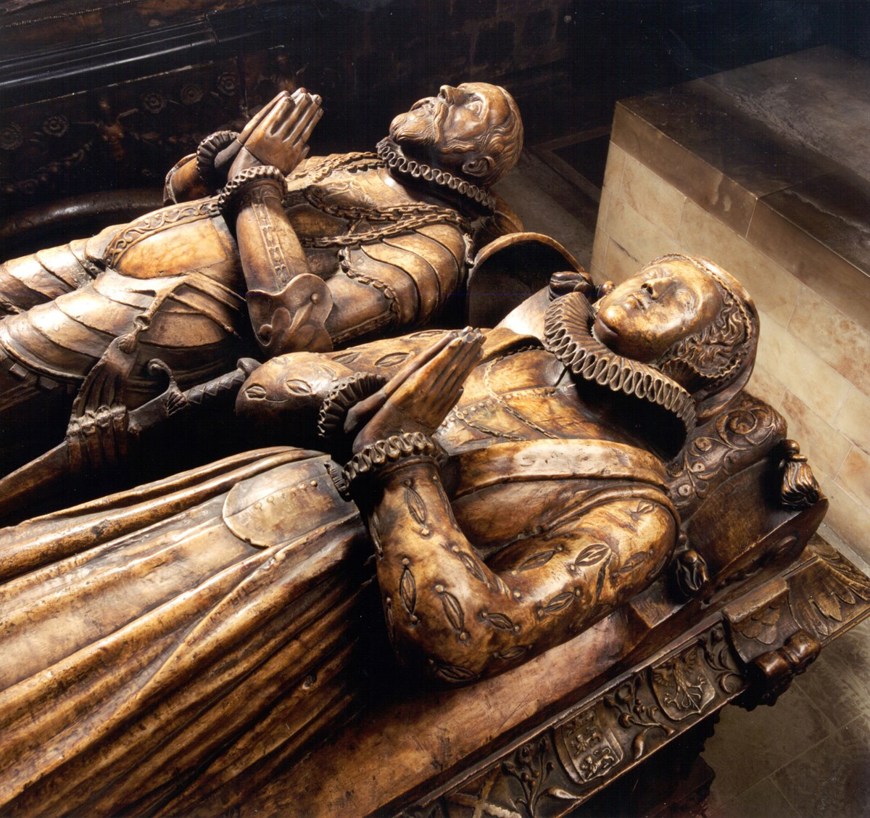
The tomb of Godfrey Foljambe and his wife. They were wealthy land owners who lived at Walton. His bequest of £13 6s 8d per year to pay a schoolmaster began the foundation of the school.

The school taught a number of pupils during the 17th and 18th centuries who became well known and respected figures. These include Samuel Pegge (pictured above) antiquarian and rector of Old Whittington, Erasmus Darwin (grandfather of Charles Darwin) and Thomas Secker (the Archbishop of Canterbury 1758-1768)

The school shield reflects its origins and the two halves represent two of the chief benefactors; Foljambe and Clarke.
The Victorian school
In 1845, after thirteen years of closure, the old school was demolished and a new school built. It finally re-opened in 1847 with Rev. Frederick Calder as headmaster.
Under his direction attendance at the school and its reputation improved. By 1867 there were 95 boys on the role and a government report stated that “the school has risen from insignificance…”
Despite minor enlargements in 1860 and 1872, by the end of the nineteenth century, the school was in need of significant expansion. In 1899 a new wing was built incorporating not only new classrooms but also science labs, a gymnasium and an art room.
The curriculum from the 1840s onwards was very limited, concentrating on Latin, maths and English grammar. In 1878 the range of subjects was expanded to include French, natural science and drawing. Entrance exams were also introduced.
Although enlarged in 1860 and 1872, the school underwent a significant extension in 1899 with a new wing incorporating a gymnasium and science labs. By the late nineteenth century, physical exercise was beginning to be seen as an important part of a boy’s education. The School’s first athletics sports day was held in 1888.
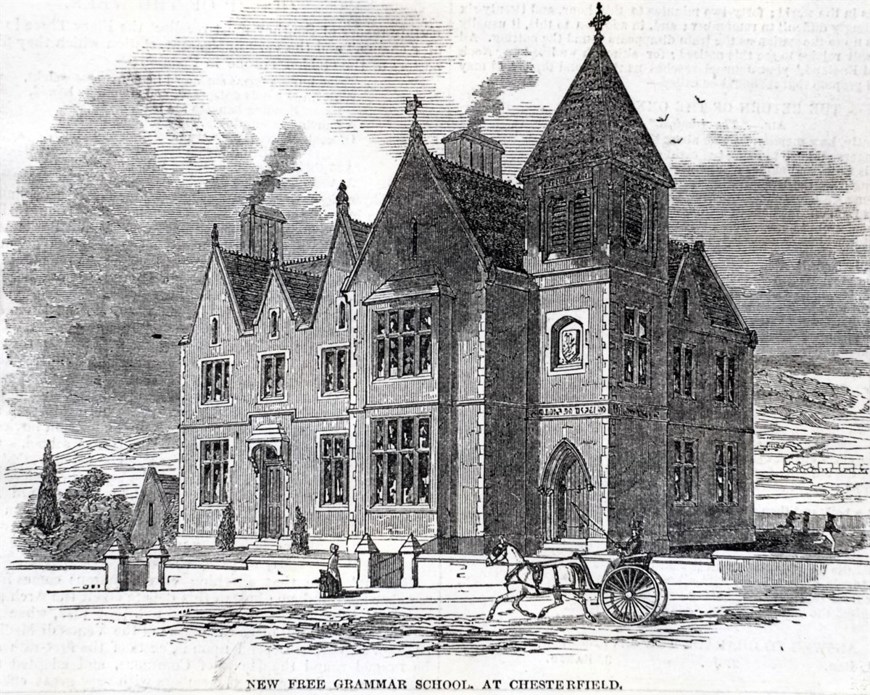
The newly built school opened in February 1847 with 33 pupils enrolled in the upper school.
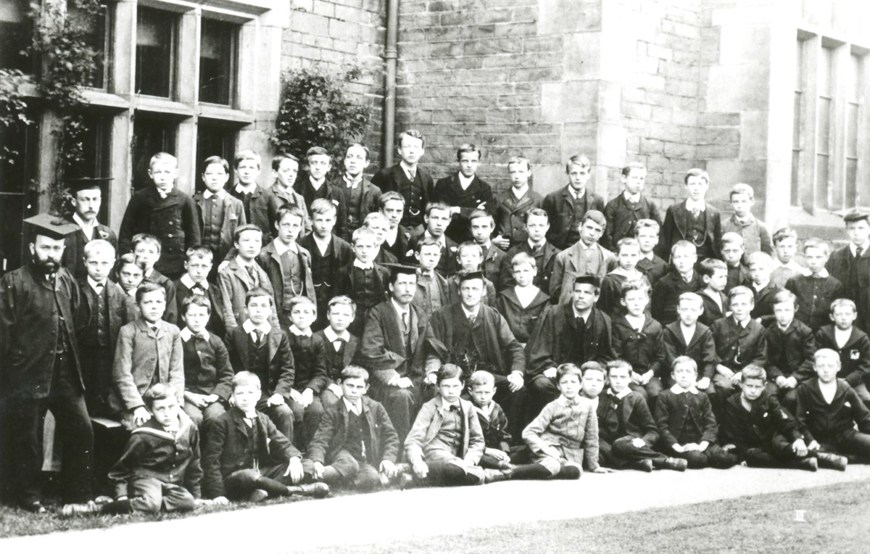
The Grammar School was a fee paying school, charging £6 to £10 per year for day pupils in 1867 (boarders were charged more). Subjects such as Greek were taught at extra charge. There were, however, a number of foundation pupils who received scholarships.
Until the 1920s, the School took boarders as well as day pupils. The boarders stayed with the headmaster and his wife. The profits from this supplemented his income which, at £70 per year, was relatively low at the time.
A growing school - 1900 to 1940
Chesterfield’s Grammar School continued to flourish as it embarked on a new century. The number of pupils more than doubled between 1908 and 1928 to just over 500, while the social life of the school prospered. A wide range of clubs and societies were established and the school magazine, The Cestrefeldian, was formed.
However the School faced several challenges. The increased number of the boys on the roll meant that expansion of the school buildings was necessary. The First World War not only saw teachers called up but also 83 former pupils killed in action. In addition the School’s status as an independent public school changed. In 1940 it became fully administered by Derbyshire County Council.
In 1916 the School appointed its first female teaching staff as several male teachers had entered the army.
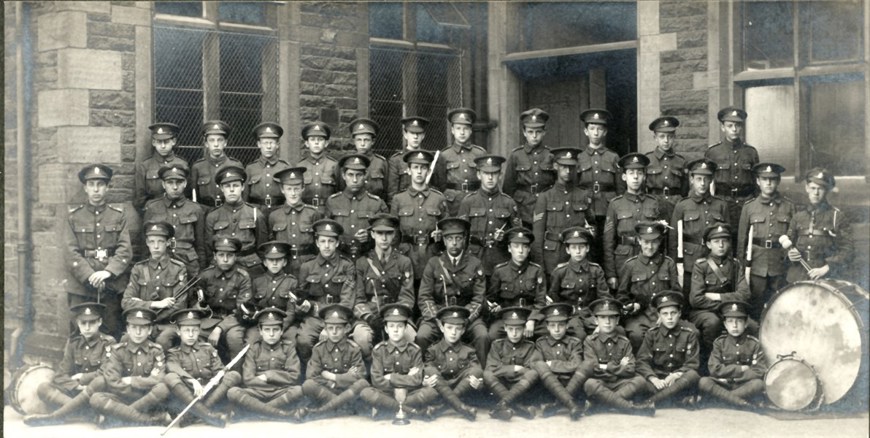
The Grammar School Cadet Corps (pictured above) was formed in 1915. This was a uniformed group which trained boys in military drill and tactics. It was affiliated to the Notts. and Derby Regiment.
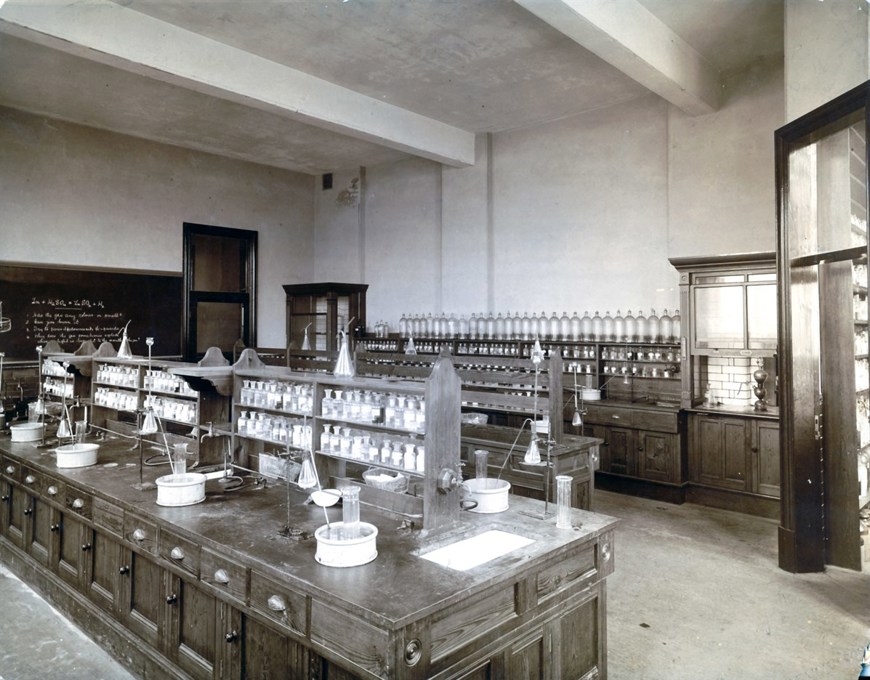
The chemistry laboratory (pictured above). Until the 1920s the majority of boys left school before the age of sixteen (the legal school leaving age was fourteen). The School developed a 6th form and encouraged its pupils to stay on and perhaps aspire to further education. Scholarships of £15, developed in 1935 with money given by George Albert Eastwood, helped some boys to do this.
The increase in pupil numbers put a strain on the Victorian school buildings. In 1921 the headmaster’s house was converted into extra form rooms, library and dining room while in 1929 a new wing was built.
The school house system was formed in 1908. The five houses of Foljambe, Clarke, Heathcote, Large and Lingard (Bradley was added in the 1940s) were named after the chief benefactors of the School. They were represented by different colours which were shown in rings on the boys’ caps.
Not just for academic learning, the School provided a wide range of extra-curricular activities according to the boys’ interests. The Debating Society, formed in 1908, was one of the earliest but others soon followed: the Chess Club (1910s), French Society (1926), Hobbies Club (1927) and even a Gramophone Society (1931).
The School’s Board of Governors held their last meeting in 1940 prior to the control of the school passing to Derbyshire County Council. The main reason behind the change was the condition of the school buildings and restrictions of the site for further expansion. A re-build of the school was needed but the school was unable to fund this independently.
The grammar school - 1940 to 1991
From the 1940s onwards Chesterfield Grammar School continued its academic and sporting achievements, however it was also a period of great change.
The school finally moved to a new site on Chatsworth Road (Brookside) in 1967. The Second World War and financial constraints had delayed the development for many years despite the purchase of the land in the 1930s.
The 1944 Education Act saw the school become a state funded grammar school with pupils required to pass the 11+ exam to enter. By the 1970s, comprehensive education was being introduced and in 1976 Chesterfield School (as it was known by then) became an academic secondary school for boys, admitting pupils from the age of thirteen.
Further re-organisation of Chesterfield’s schools unfortunately marked the end of the school’s history. Chesterfield School closed in 1991 and a new co-educational school, Brookfield, opened on the existing site.
The bottom field on Sheffield Road was not large enough for the wide range of sporting activities on offer. As a result, in 1953 a sports ground opened on Storrs Road where the new school was intended to be built. The site included playing fields for rugby, football and hockey as well as a cricket pitch and facilities for athletics.
The building of the new school on Chatsworth Road was done in phases. The first phase included the science and maths block and was completed in 1961. The classrooms were used by the school while the second phase was completed.
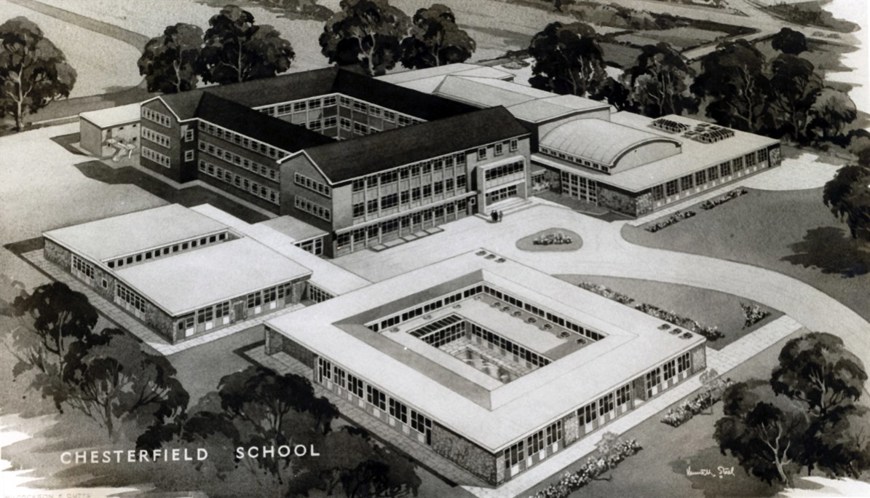
The new school at Brookside was equipped with modern facilities including dedicated language laboratories, cafeteria and a swimming pool. It also had its own laundry to provide towels for sports lessons.

Throughout its history the school prided itself in providing the best education for its pupils. The purchase in 1982 of ten computers for use in the classroom and for administration was a forward thinking move.